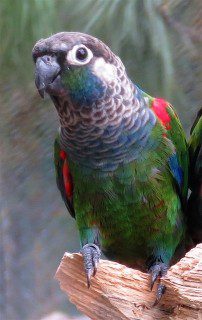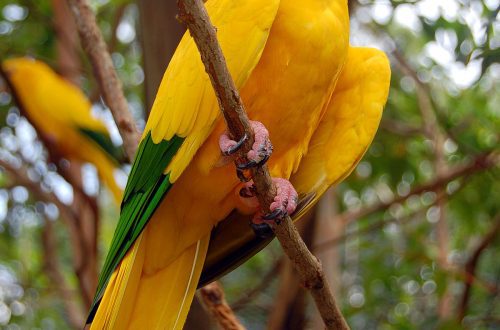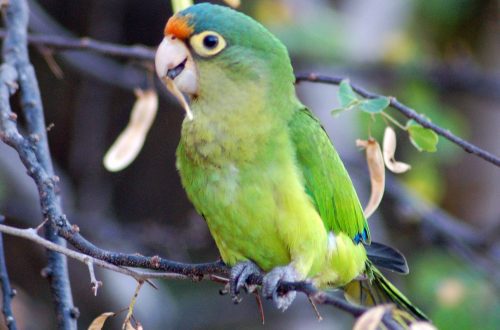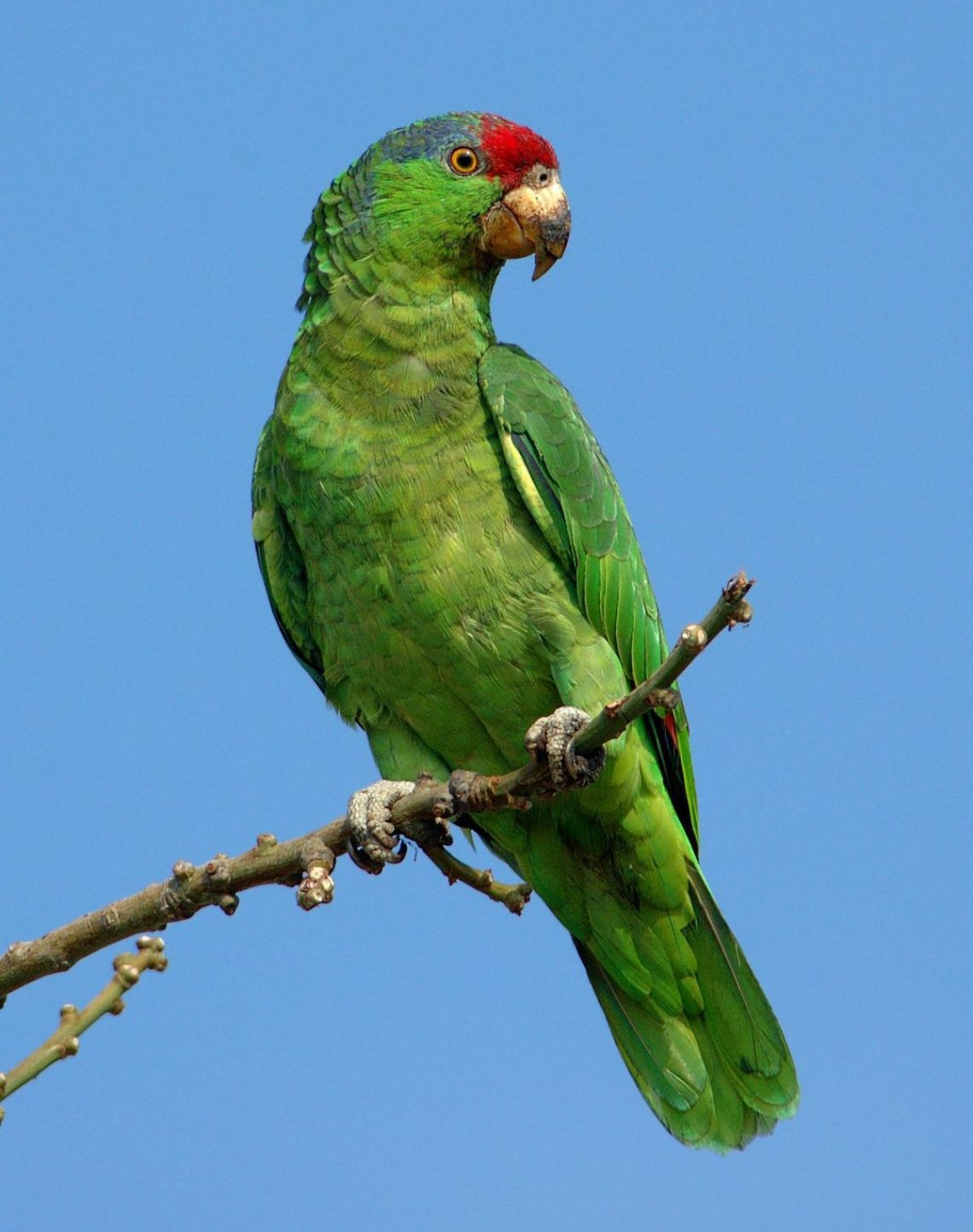
aurpegi gorriko amazona
Edukiak
Red-fronted Amazon (Amazona autumnalis)
Agindua | Parrots |
familia | Parrots |
Lasterketa | Amazons |
Appearance of the red-faced Amazon
The red-fronted Amazon is a short-tailed parrot with an average body length of about 34 cm and a weight of about 485 grams. Individuals of both sexes are colored the same. The main color of the red-fronted Amazon is green, large feathers with dark edging. There is a wide red spot on the forehead. There is a bluish spot on the crown. Cheeks are yellow. The feathers on the shoulders are red. The periorbital ring is naked and white, the eyes are orange. The beak is pinkish at the base, the tip is gray. Paws are powerful gray.
Two subspecies of the red-fronted Amazon are known, differing from each other in color elements and habitat.
Lifespan of the red-faced Amazon with proper care, according to some reports, is up to 75 years.
Habitat and life in nature of the red-fronted Amazon
The species of red-faced Amazon lives from Mexico to Honduras, Nicaragua, Colombia and Venezuela. The species suffers from poaching and loss of natural habitat.
The species lives in various places, in woodlands, open forests with edges, mangroves, wooded swamps, plantations and agricultural lands also visit. Usually keep heights up to 800 meters above sea level.
Red-faced Amazons feed on various seeds, figs, oranges, mangoes, palm fruits, and coffee beans.
The species is nomadic, when feeding they prefer to stay in flocks, sometimes together with various types of macaws. Sometimes they gather in numerous flocks of up to 800 individuals.
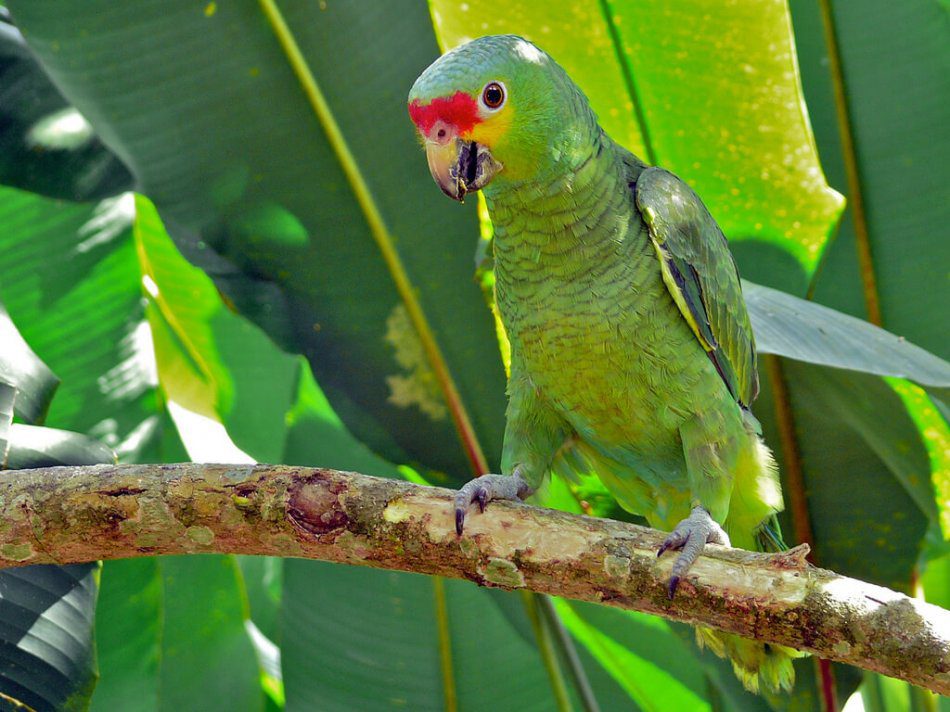



In the photo: red-faced Amazon. Photo: flickr.com
Reproduction of the red-faced Amazon
Depending on the habitat, the breeding season of the red-fronted Amazon falls on January – March. They nest in hollows of trees.
The clutch of the red-fronted Amazon usually contains about 3 eggs, which the female incubates for 26 days.
Red-fronted Amazon chicks leave the nest at the age of 8-9 weeks. For a few more months, they are fed by their parents until they are completely independent.





